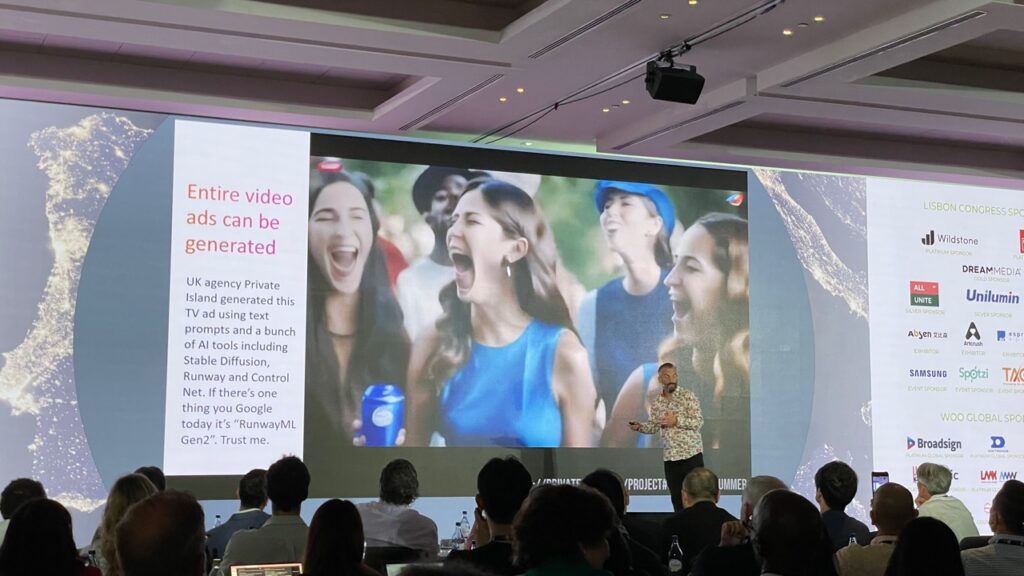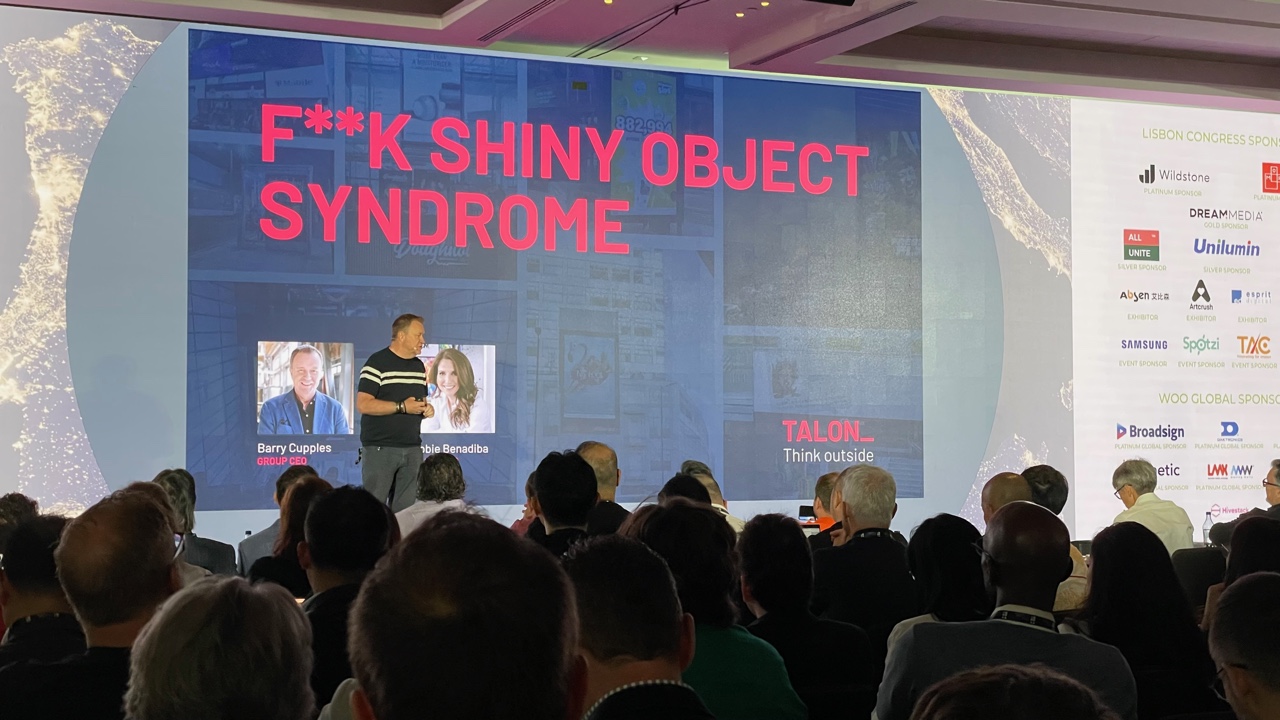Data Utilization in Out-of-Home Advertising. Part Two of the Report from the World out of Home Organization Congress in Lisbon.
On the second day of the Lisbon congress, thanks to Cathy O'Connor from oOH!media, we were transported to Australia, where the company holds a 40% share of the OOH market. Cathy emphasized the importance of data and technology in out-of-home advertising. She highlighted the potential for using data and the latest technologies to create creative and personalized campaigns. She mentioned OMA MOVE - Measurement of Outdoor Visibility and Exposure – an Australian standard for measuring the effectiveness of out-of-home advertising, in whose creation the industry invested a significant 17 million Australian dollars. Cathy also presented an AI tool - Craiyon v3, which assists in creating advertising poster designs.
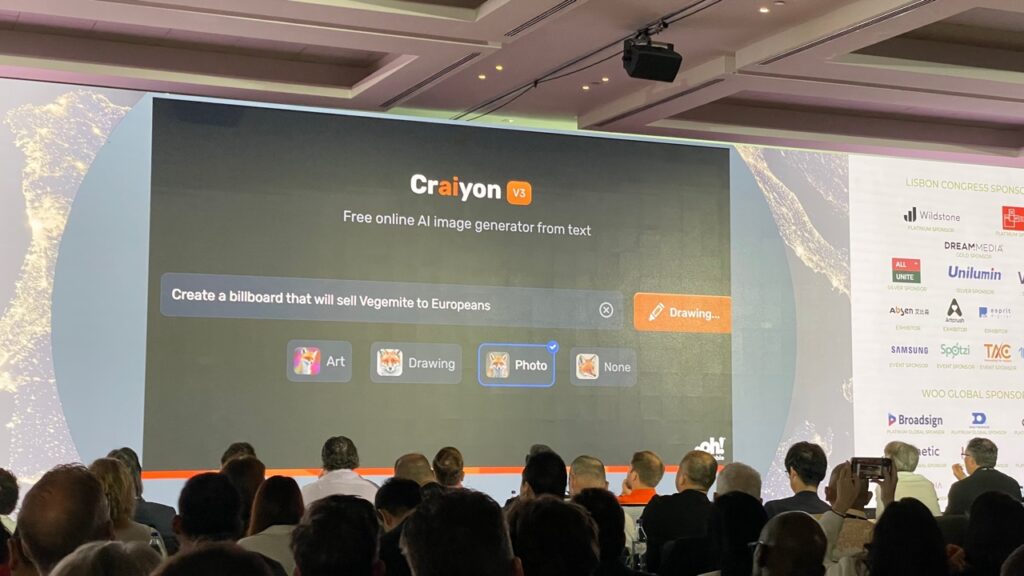
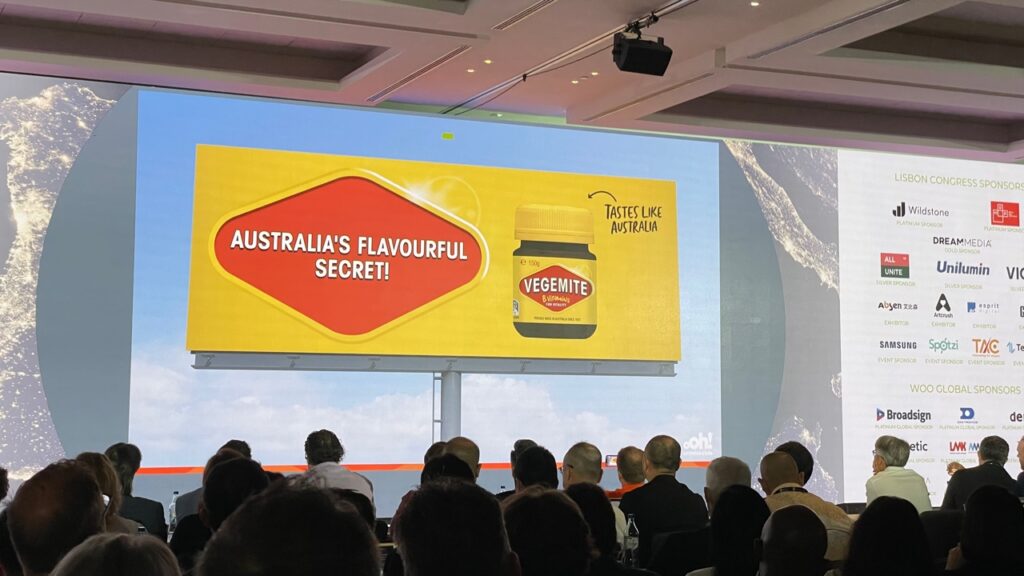
Superpowers of Out-of-Home Advertising
The next presentation - by Barry Cupples and Debbie Benadiba from the American company Talon - had a somewhat provocative title: "F**k shiny object syndrome. OOH shines brightest". It discussed the growing value and importance of OOH advertising. The speakers pointed out a misunderstanding of OOH's role in relation to digital transformation. They emphasized its features such as scale, precise targeting, audience trust, creativity, and the ability to measure effects. The "superpowers" of out-of-home advertising were highlighted:
- consumer trust (78% of consumers take action after seeing OOH advertising),
- OOH's role in omnichannel strategy (e.g., increased reach in combination with online, TV, radio),
- environmental responsibility (living walls, eco-friendly banners, green energy, environmentally friendly paints, reusable vinyls, carbon neutrality),
- impact of creativity (47% effect on purchase and sales),
- and data utilization.
The thesis was put forward that OOH should strive to be the most sustainable medium, taking into account the preferences of younger generations and changing consumer attitudes. The presentation concluded by emphasizing the role of education, building, and developing OOH as a valuable medium. A clear goal was set: to achieve a 25% share of the media market.
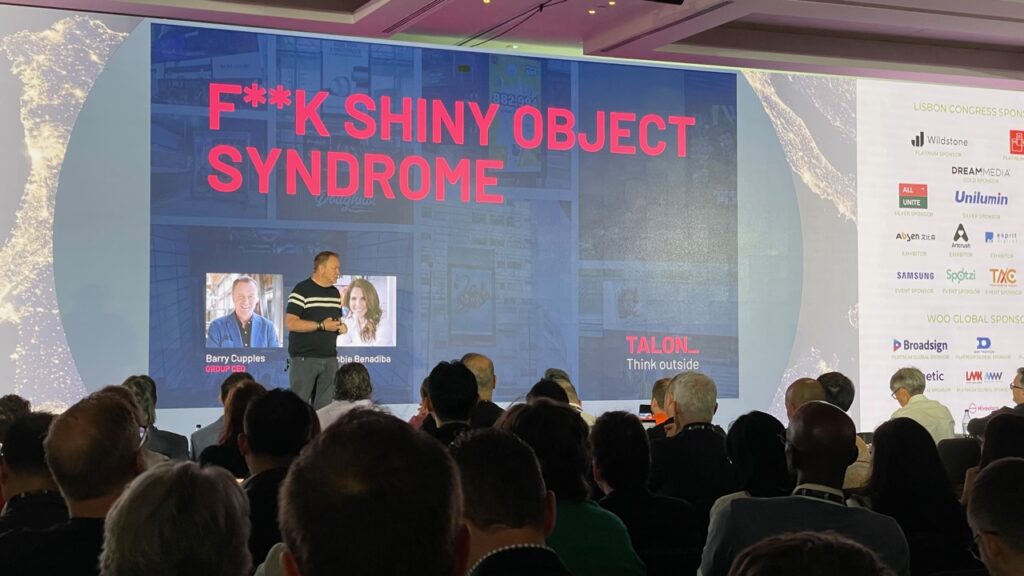
Programmatic OOH in Global Markets
Next, Michael Provenzano from Vistar Media discussed the role of programmatic OOH in global markets. Michael pointed to the growth in digital OOH advertising spending in the United States. He also emphasized the importance of personalizing ad content, especially in the context of location, weather, or time. He also presented the Vistar Dynamic OOH tool. Its purpose is to deliver the most contextually relevant ad content to individual OOH screens depending on location, time, specific audience, and other parameters.
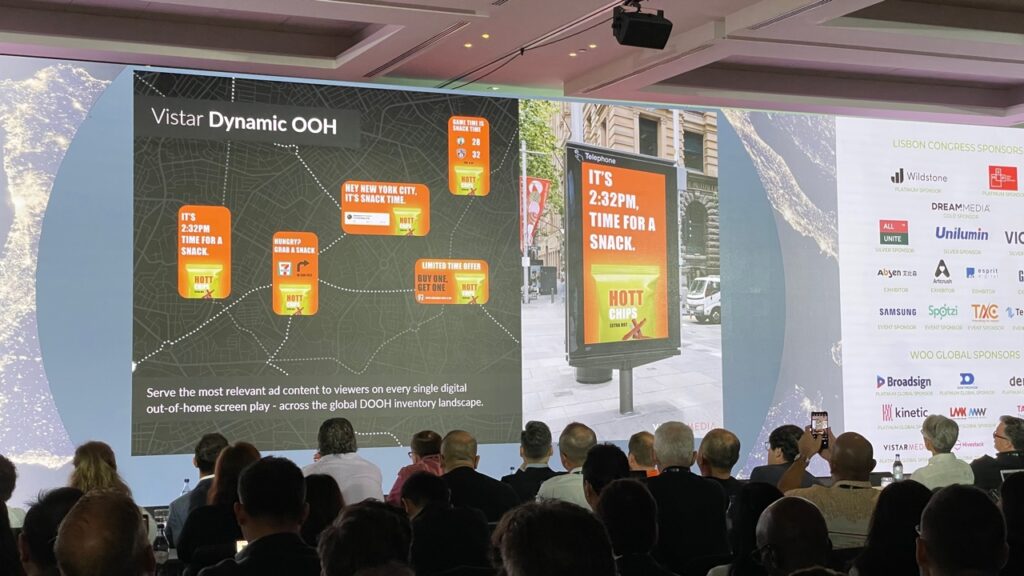
Industry Complexities in India
Noomi Mehta, chairman of the Indian Outdoor Advertising Association, spoke about the complexities of the out-of-home advertising market in India during one of the discussion panels. Srikanth Ramachandran from the Indian company Moving Walls responded to these challenges. He emphasized the need for automation and simplifying the OOH advertising purchase process. He also showed how, in his opinion, technological solutions and online platforms should be built to make planning and purchasing OOH advertising campaigns easier.
OOH Audience Research in the UK and USA
The next three presentations discussed various aspects related to audience research in out-of-home advertising. Particular attention was paid to the British, American, and Swedish markets.
In this section, the speakers highlighted the need for more precise data on out-of-home advertising audiences. It was noted that neither data from mobile device applications nor data from telecommunications operators are sufficiently stable. Meanwhile, by using more data sources, more stable results can be obtained, better reflecting the audience. Natural differences in regions and environments were pointed out, as well as the need for regular updates of factors considering changing travel patterns.
The presentations also emphasized the importance of measuring indoor audiences. Using MST (Multi-Sensor Tracking) technology, data on pedestrian routes, time spent in various locations, and movement speed were obtained.
Denise Turner from Route Research and Mark Flood from IPSOS discussed innovations in OOH audience measurement systems in the British market. They presented new, improved methods for measuring audience and pedestrian behavior, which allow for refining campaign effectiveness.
Next, Dylan Mabin from Geopath presented the evolution of out-of-home advertising audience measurement in the American market. Geopath, formerly known as Traffic Audit Bureau for Media Measurement Inc., is a non-profit organization that provides data and standards for measuring out-of-home advertising in the United States. Dylan focused on creating population profiles, identifying movement and activity patterns, and determining audience exposure to advertisements.

OOH Audience Research in Sweden
Mats Rönne from Outdoor Impact presented Swedish experiences related to cross-channel OOH advertising audience measurement. He discussed the need to standardize audience measurement definitions and standards, as well as the importance of data in the media planning and buying process. Rönne discussed Swedish experiences in audience measurement. He highlighted the differences between person-centric and device-centric approaches. He emphasized the need to standardize definitions, standards, measurements, and currencies in the industry. As part of Swedish industry initiatives, an effectiveness system and a Cross Media Measurement initiative were introduced. Their aim is to standardize language and definitions in the industry and introduce measurement standards.
Hivestack founder and CEO, Andreas Soupliotis, presented the Outside-In concept, developed by Jeff Green, CEO of The Trade Desk. This principle assumes the utilization of external advertising budgets by media owners. The goal is to attract budgets to the local market from any external market. An illustration was the example of a fictional brand, Lalaorange, planning a campaign in Japan.
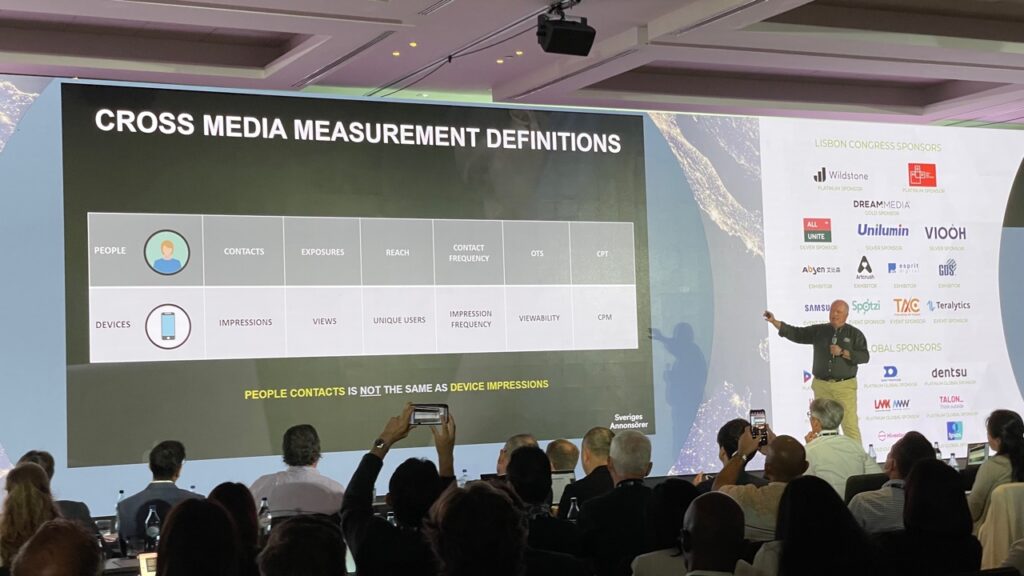
Make OOH Easier
The next panel, simply titled “Making OOH easier to plan & buy”, focused on the relationships between media owners and agencies. Here, important aspects include seller-buyer contact, understanding the client and their operating segment, reliable campaign execution, and ease of purchase. Regarding media, social media and out-of-home advertising proved to be the easiest to plan and buy.
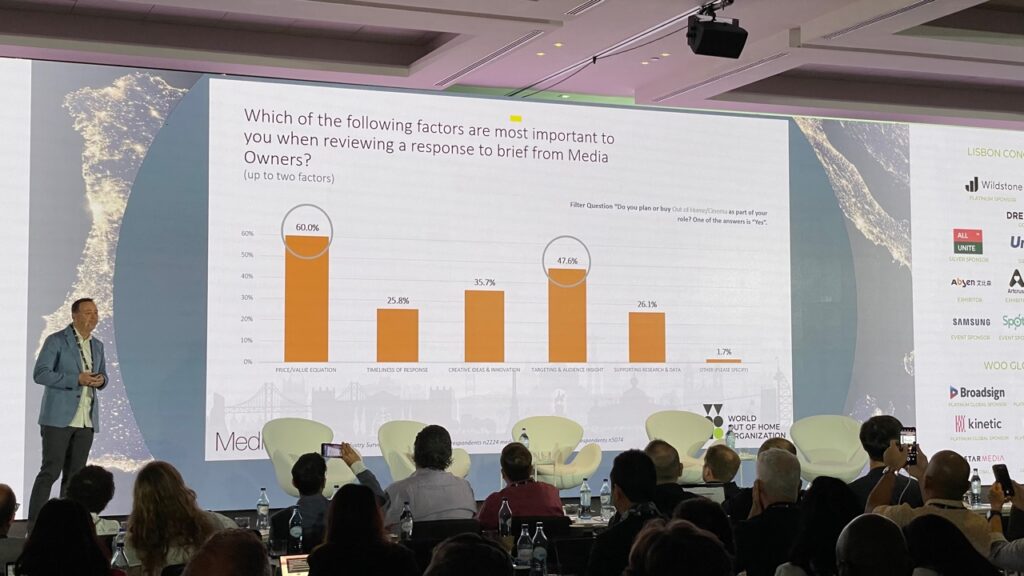
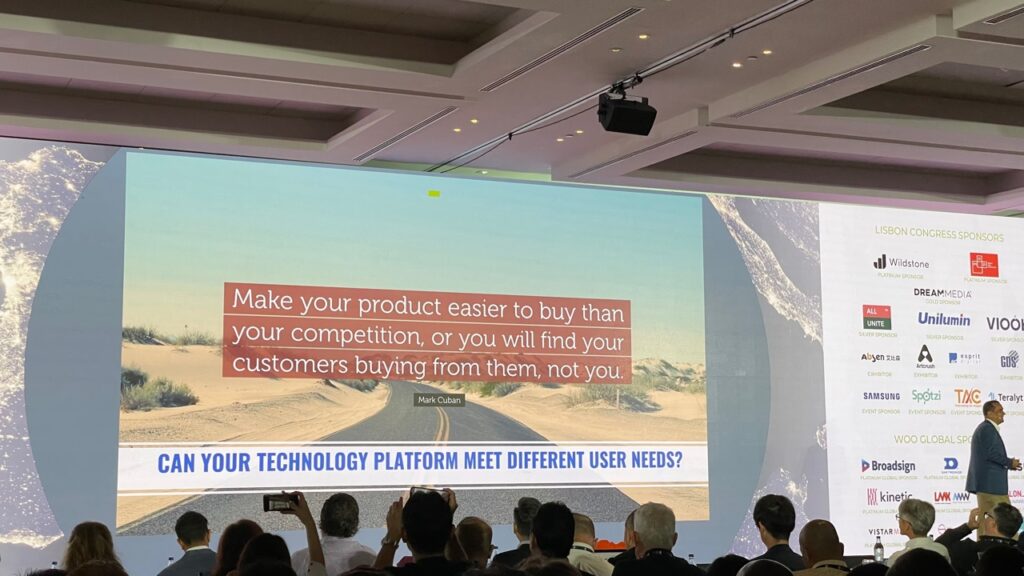
Big Data, AI, AR / VR, LiFI
In turn, Jun Sakurai from Live Board discussed how Big Data influences the media market in Japan. Docomo – the largest telecommunications operator, and Dentsu – the largest advertising agency in the Land of the Rising Sun, created Live Board. This tool utilizes data on 93 million users, enabling precise campaign planning, targeting, and flexibility depending on various factors.
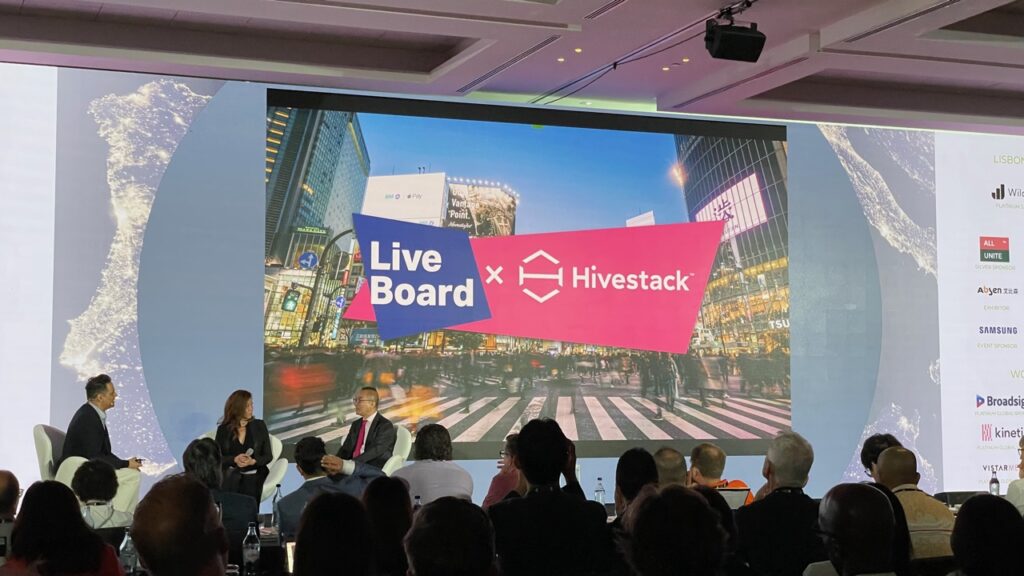
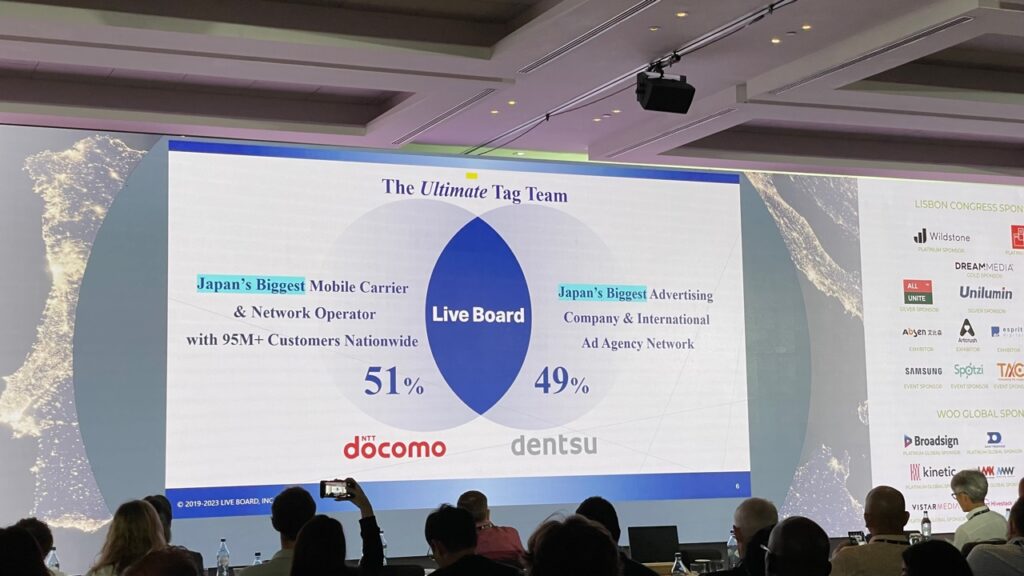
Next, Dino Burbidge from Sky Lab summarized the latest technological innovations in the OOH industry, such as generative artificial intelligence (AI), AR and VR technology with a “transparency” feature, the use of ChatGPT from OpenAI, generative AI tools for creators from Adobe, LiFi as a potential technology for out-of-home advertising, and flexible LED screens in unexpected places. All of this suggests a dynamic future for the out-of-home advertising sector, with a particular emphasis on personalization, interactivity, and the use of Big Data.
All presentations on the second day of the congress emphasized the importance of data, automation, and innovation in OOH advertising. Data utilization allows for creating more effective campaigns, better measuring effectiveness, and adapting messages to audiences. Automating the OOH advertising purchase process facilitates cooperation between out-of-home advertising operators and advertisers. Technological innovations, such as artificial intelligence, open up new possibilities for creative and more effective OOH advertising.
The recent Congress confirmed the growing importance of data and technology in OOH advertising and the need for cooperation and exchange of experience among various market players. With technological advancements and increasing data availability, our industry's potential for growth and effective audience reach is expanding.
